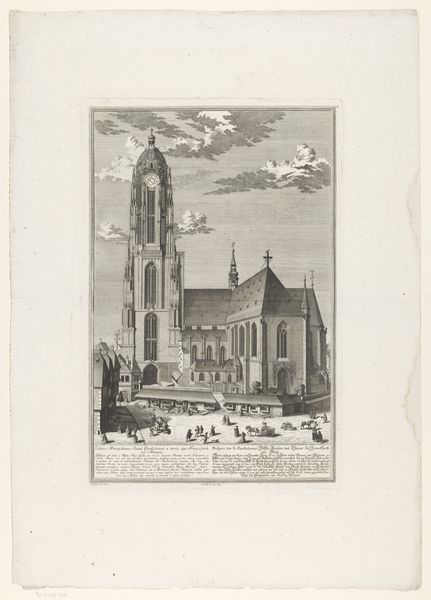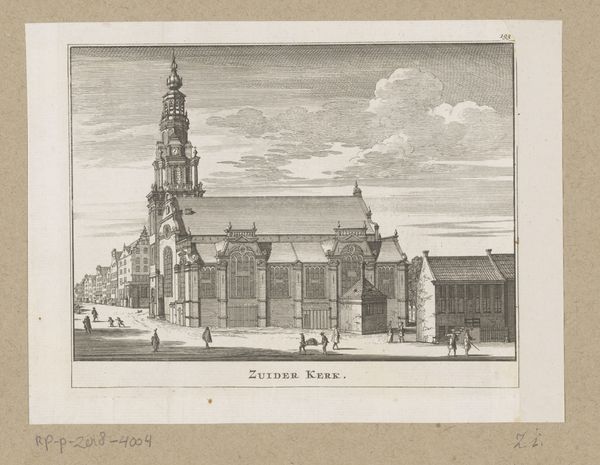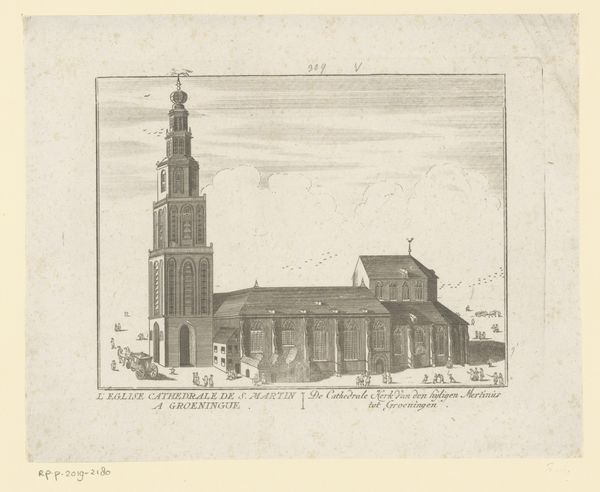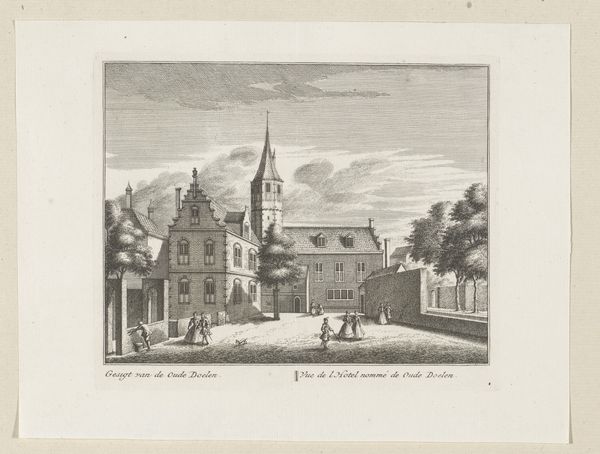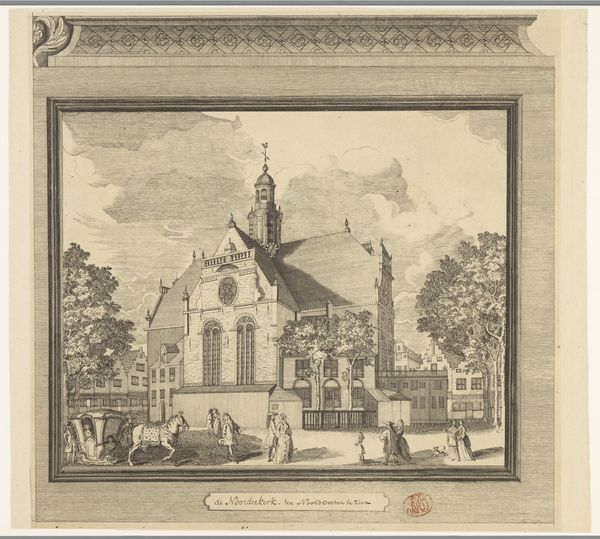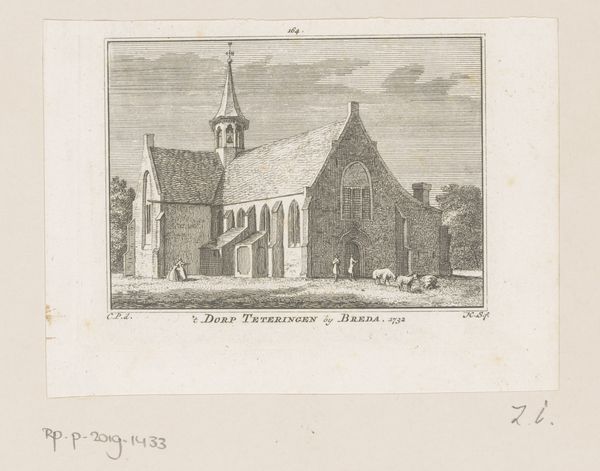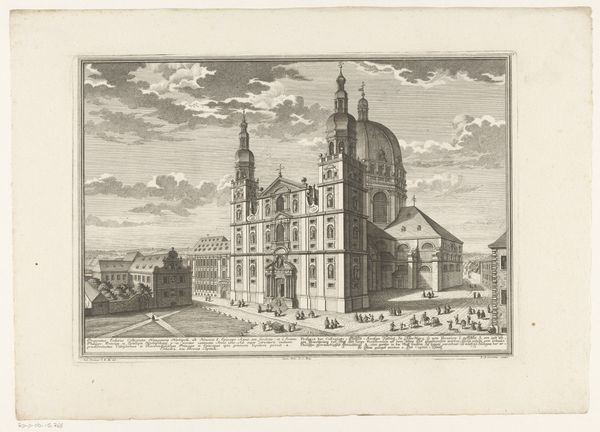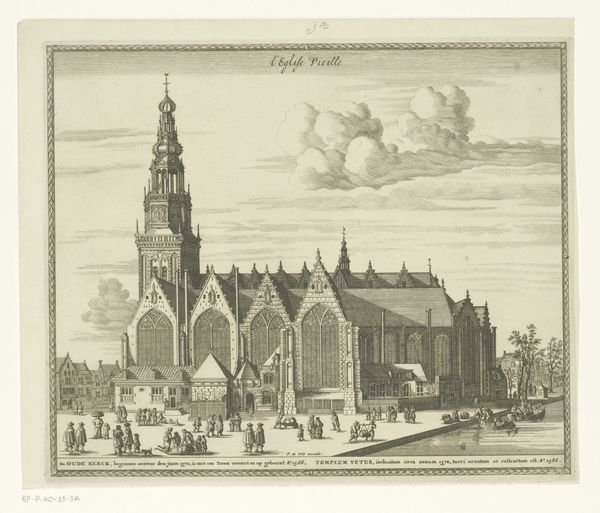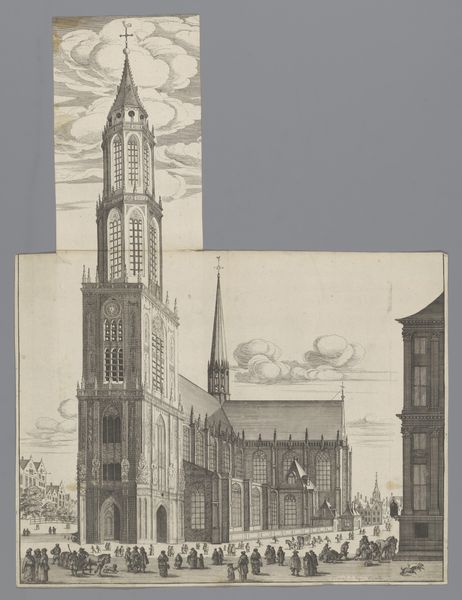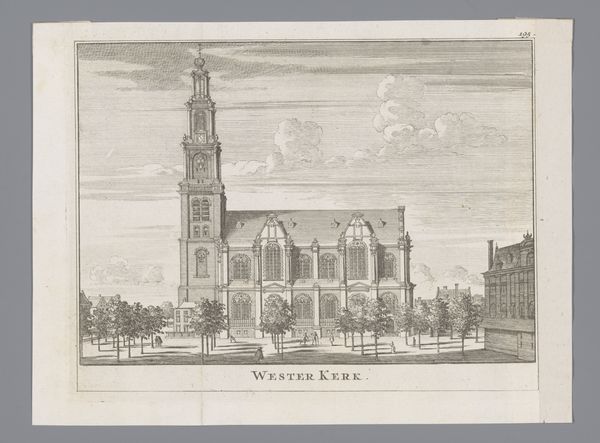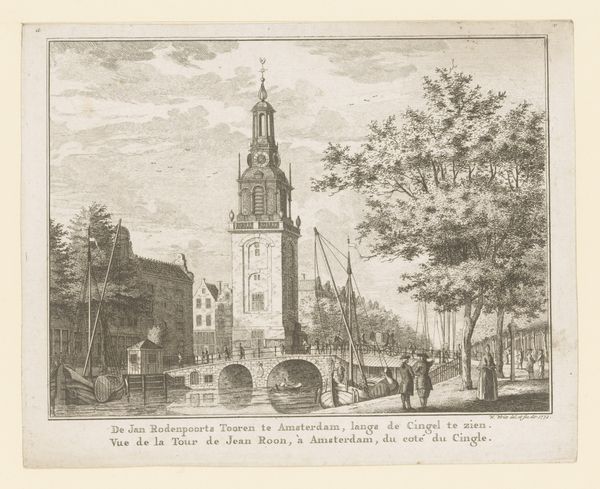
Dimensions: height 80 mm, width 108 mm
Copyright: Rijks Museum: Open Domain
Editor: This print, titled "Gezicht op de kerk en het stadhuis te Hulst, 1739", by Hendrik Spilman, dating sometime between 1746 and 1792, depicts a cityscape with impressive architectural structures. The meticulous detail achieved through engraving is remarkable. How do you approach an image like this? Curator: Focusing on formal elements, we see a carefully structured composition, divided into distinct spatial planes. Notice how the artist employs line—particularly in the architecture—to create depth and evoke a sense of grandeur. The play of light and shadow, achieved through precise hatching techniques, is essential to understanding the image. Editor: So, the visual relationships and contrasts are more important than… say, what the buildings might symbolize? Curator: Symbolism is secondary. The primary function of art resides in the skillful arrangement of form. Consider the geometry in this work, the deliberate positioning of elements like the spire and the trees. Are they randomly distributed, or are they working together to achieve a compositional balance? Editor: They do seem to be framing the church almost. And the eye definitely travels upward. So you’re saying the lines, the contrast, they dictate our experience? Curator: Precisely. It is in the internal logic of the artwork itself that meaning emerges, irrespective of any contextual factors external to its making. Editor: That makes the act of looking feel much more active somehow. I’ll definitely view prints differently from now on! Curator: Indeed, paying close attention to formal elements opens a rich field for exploring and experiencing a work.
Comments
No comments
Be the first to comment and join the conversation on the ultimate creative platform.


